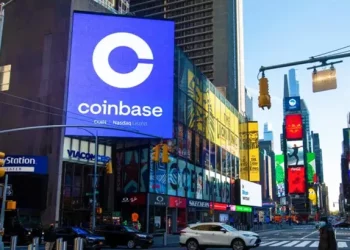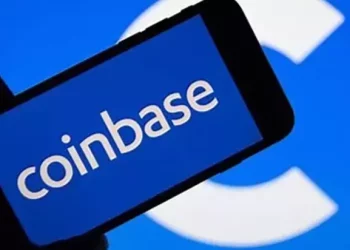Binance is one of the largest and most popular cryptocurrency exchanges in the world. Since its inception in 2017, Binance has rapidly grown to become a dominant force in the crypto market, offering a wide range of services for both novice and experienced traders. With millions of users from all corners of the globe, Binance has revolutionized the way people buy, sell, trade, and invest in digital currencies. But who can actually use Binance? This question is central to anyone looking to engage with the platform, whether as a trader, investor, or enthusiast.
In this article, we will explore who can use Binance, the platform’s accessibility features, and the various factors that determine whether an individual or entity is eligible to use the exchange. We will cover the geographical restrictions, user requirements, and legal considerations that come into play when accessing Binance. Additionally, we will look at the different types of users who can benefit from Binance’s services and how they can maximize their experience on the platform.
Overview of Binance
Binance is a global cryptocurrency exchange that offers a variety of services, including:
Spot Trading: The exchange of digital currencies like Bitcoin (BTC), Ethereum (ETH), Binance Coin (BNB), and hundreds of other altcoins.
Futures Trading: Contracts that allow traders to speculate on the future price of digital assets.
Staking: Earning rewards by participating in the network security of certain cryptocurrencies.
Savings and Loans: Earning interest on digital assets or borrowing crypto.
NFT Marketplace: A platform for buying and selling non-fungible tokens (NFTs).
Binance Earn: A feature that allows users to earn passive income from their digital holdings.
Due to the variety of services offered, Binance caters to a broad audience, ranging from everyday users who simply want to buy and hold crypto, to seasoned traders who are looking for advanced tools and features. But the question remains: who is eligible to use Binance?
Geographical Restrictions: Where Can Binance Be Used?
One of the most important factors to consider when asking who can use Binance is its geographical availability. While Binance is a global platform, its services are not available in all countries. The exchange has faced regulatory scrutiny in several regions, which has led to limitations on its operations in certain countries.
1. Countries Where Binance Is Fully Accessible
In many countries around the world, Binance is fully accessible, allowing users to register, deposit funds, trade cryptocurrencies, and use all other available services. Some of the countries where Binance operates without restrictions include:
United States: However, Binance operates in the U.S. under a separate entity called Binance.US, which offers a limited range of services compared to the global Binance platform.
Canada: Binance is available in Canada, although certain provinces may have different regulations.
Europe: Most European countries, including the UK (for now), Germany, France, Spain, and Italy, allow users to access Binance without major restrictions. However, some European countries have introduced specific crypto-related regulations that Binance must comply with.
Australia: Binance is available to users in Australia, although the platform must adhere to local financial regulations.
Latin America: Binance operates in several Latin American countries such as Brazil, Argentina, and Mexico.
2. Countries with Binance Restrictions
Due to regulatory challenges, Binance is not available in some countries. Some of the nations where Binance has limited or no access include:
China: Binance has been banned from operating in mainland China due to the government’s crackdown on cryptocurrency trading.
India: Binance has faced challenges in India due to regulatory issues. Although Binance has historically been available, Indian users may face limitations or delays in accessing certain services.
Japan: Japan has strict cryptocurrency regulations, and Binance does not currently offer services to Japanese residents.
North Korea: Due to international sanctions, Binance does not operate in North Korea.
United States: Although Binance.US is available, the full Binance platform is restricted in the U.S. due to legal and regulatory issues.
Binance has made efforts to comply with the regulatory requirements in various countries. As such, users must check whether the exchange is available in their respective region before attempting to sign up.
User Requirements: Who Can Create an Account on Binance?
Anyone who meets the basic eligibility requirements can create an account on Binance and start using the platform. However, Binance does have certain restrictions and user requirements that potential users must meet. These include age restrictions, KYC (Know Your Customer) compliance, and identity verification.
1. Age Requirements
To use Binance, you must be at least 18 years old. This is the minimum legal age in most countries for entering into contracts and engaging in financial transactions. If you are under the age of 18, you will not be able to create an account on Binance.
2. KYC Verification
As part of its compliance with global anti-money laundering (AML) and combating the financing of terrorism (CFT) regulations, Binance requires users to complete Know Your Customer (KYC) verification. This process helps the platform verify the identity of users to ensure that they are not engaging in illegal activities.
The KYC process involves submitting personal information, such as:
- Full name
- Date of birth
- Residential address
- Proof of identity (passport, driver’s license, or national ID)
- Proof of address (utility bill or bank statement)
Completing KYC verification unlocks additional features on Binance, such as higher withdrawal limits and access to certain trading features. Without completing KYC, users may be restricted to basic functionalities like limited withdrawals or access to a smaller range of cryptocurrencies.
3. Account Verification for Advanced Features
While basic account creation does not require extensive verification, advanced features like trading cryptocurrencies, staking, and futures trading require additional levels of verification. This may include:
Enhanced KYC: Providing further documentation or verification for larger trading volumes.
Bank Account Verification: Verifying your bank account for deposits and withdrawals.
Two-Factor Authentication (2FA): Securing your account with additional layers of protection.
4. Prohibited Users
Certain individuals and entities are prohibited from using Binance due to regulatory or legal restrictions. These typically include:
Politically Exposed Persons (PEPs): Individuals who hold prominent public positions (e.g., government officials, judges, or military officers) may face additional scrutiny when using Binance.
Sanctioned Countries: Users from countries subject to international sanctions or trade restrictions (e.g., Iran, North Korea) are prohibited from accessing Binance.
Fraudulent Users: Users who engage in fraudulent or illegal activities are banned from using the platform, and Binance actively monitors accounts for suspicious activity.
Types of Users Who Can Benefit from Binance
Binance caters to a wide range of users, from beginners to advanced traders. The platform offers a variety of services designed to meet the needs of different users. Below, we will explore the main types of individuals who can benefit from using Binance.
1. Beginner Cryptocurrency Users
Binance is an excellent platform for beginners looking to enter the world of cryptocurrency. The exchange offers a user-friendly interface with simple deposit and withdrawal methods. Beginner traders can easily buy and sell popular cryptocurrencies like Bitcoin (BTC), Ethereum (ETH), and Binance Coin (BNB) with minimal hassle. Binance also offers educational resources and tools to help new users understand the basics of crypto trading.
Some beginner-friendly features include:
Simple buy/sell interface: Ideal for users who want to quickly buy or sell digital assets.
Fiat-to-Crypto Purchases: Binance allows users to purchase cryptocurrencies directly using fiat currencies like USD, EUR, and GBP.
Binance Academy: A resource center offering tutorials, videos, and articles for beginners to learn more about crypto.
2. Intermediate Traders
Intermediate traders who are familiar with the basics of cryptocurrency can also benefit from Binance’s advanced features. The platform provides a wide range of cryptocurrencies and trading pairs, enabling users to trade various altcoins in addition to Bitcoin and Ethereum.
Some of the features that appeal to intermediate traders include:
Spot Trading: Binance’s core offering for buying and selling digital assets on the spot market.
Staking: A way to earn rewards by participating in the blockchain networks of certain cryptocurrencies.
Binance Launchpad: A platform for participating in new cryptocurrency token sales (Initial Exchange Offerings or IEOs).
3. Advanced Traders
Advanced traders looking for sophisticated tools will find a host of options on Binance. The exchange offers advanced charting, futures trading, margin trading, and derivatives products. These features allow experienced traders to leverage their positions, hedge their bets, and potentially amplify their profits.
Key features for advanced traders include:
Futures Trading: A derivative market that allows traders to speculate on the future price of cryptocurrencies using leverage.
Margin Trading: The ability to borrow funds and trade with leverage, increasing both potential profits and risks.
Binance Smart Chain (BSC): Binance’s own blockchain, which offers low fees and fast transactions for decentralized applications (dApps).
4. Institutional and Professional Investors
Binance also provides a range of services tailored to institutional investors, family offices, and professional traders. These services include access to Binance’s over-the-counter (OTC) trading desk, liquidity solutions, and institutional-grade tools. Additionally, Binance offers API access for automated trading systems, allowing professional users to execute high-frequency trades at scale.
5. Crypto Enthusiasts and Investors
For those who are not interested in active trading but still want to hold and invest in cryptocurrencies, Binance offers a range of features for passive investment. The platform supports long-term holding (HODLing) of various cryptocurrencies, as well as the ability to earn passive income through staking, lending, and yield farming.
Conclusion
Binance is an inclusive platform that caters to a wide range of users, from beginners to institutional investors. However, geographical restrictions and regulatory compliance measures limit access to certain individuals in certain countries. To use Binance, individuals must meet certain age and verification requirements, including KYC compliance. Despite these limitations, Binance remains one of the most comprehensive and accessible cryptocurrency exchanges in the world, offering a variety of services to suit the needs of diverse users.
As the cryptocurrency industry continues to evolve, Binance is likely to adapt its offerings and expand its user base, but it is important for potential users to be aware of local regulations and requirements before signing up. Ultimately, anyone interested in using Binance should ensure they meet the platform’s eligibility criteria and be ready to engage in responsible trading and investing practices.
Related topics:
What Does It Cost to Trade on Coinbase?

















